The Kuiper Belt is a region of the Solar System that is located beyond Neptune’s orbit. It is made up of small icy objects, including dwarf planets, asteroids, and comets. The Kuiper Belt is named after Dutch-American astronomer Gerard Kuiper, who first predicted its existence in 1951. This region is similar to the asteroid belt, but it is much larger and contains a greater number of objects. The Kuiper Belt is believed to be the source of many short-period comets, which are comets that take less than 200 years to orbit the Sun. The most famous object in the Kuiper Belt is Pluto, which was classified as a planet until 2006 when it was reclassified as a dwarf planet. The study of the Kuiper Belt is important for understanding the formation and evolution of the Solar System.
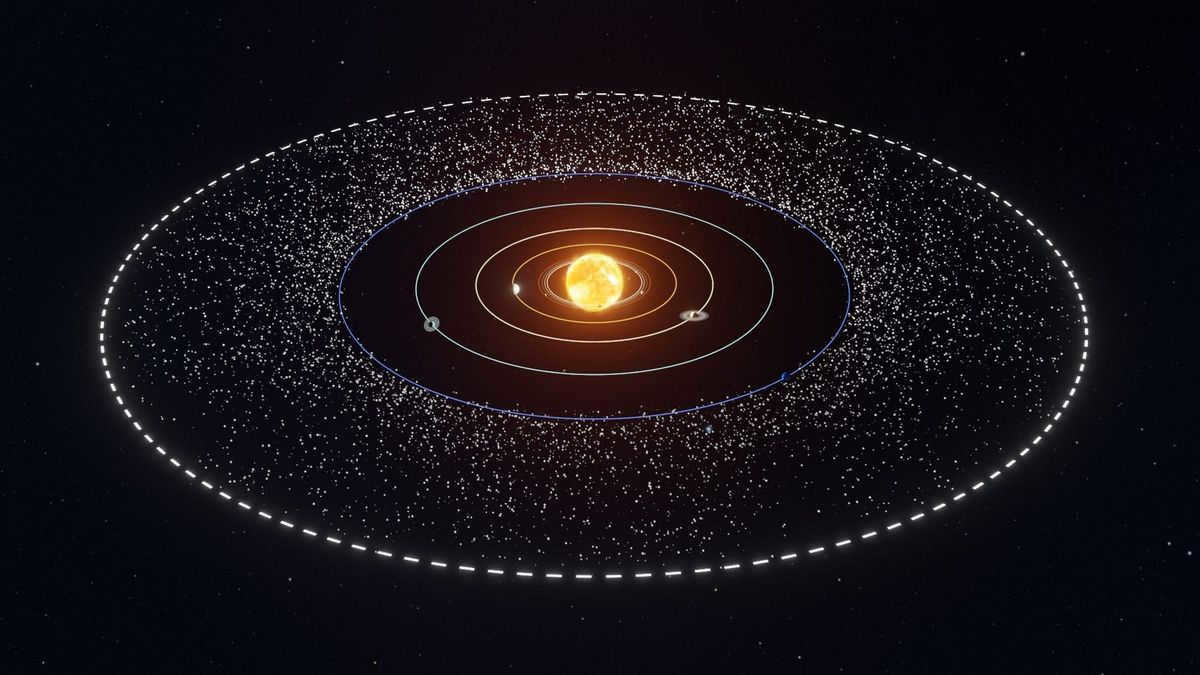
In the year 1992, specifically on August 30th, the initial object of the Kuiper Belt (following Pluto and Charon) was identified and given the name of 1992 QB1. From that point onwards, numerous comparable objects have been detected within the Kuiper Belt. In the following passage, we will provide you with an overview of this remote region within the solar system and delve into the mysteries it potentially harbors.
What is the Kuiper Belt?
The Kuiper Belt is an area in the Solar System that is shaped like a disk and is situated past Neptune’s orbit. It stretches from approximately 30 to 55 astronomical units away from the Sun. Within the Kuiper Belt, there are numerous icy objects that are believed to be leftovers from the early stages of the solar system’s formation. Despite its vast expanse, the combined mass of all the entities within the belt is approximately 10% of the Earth’s mass.
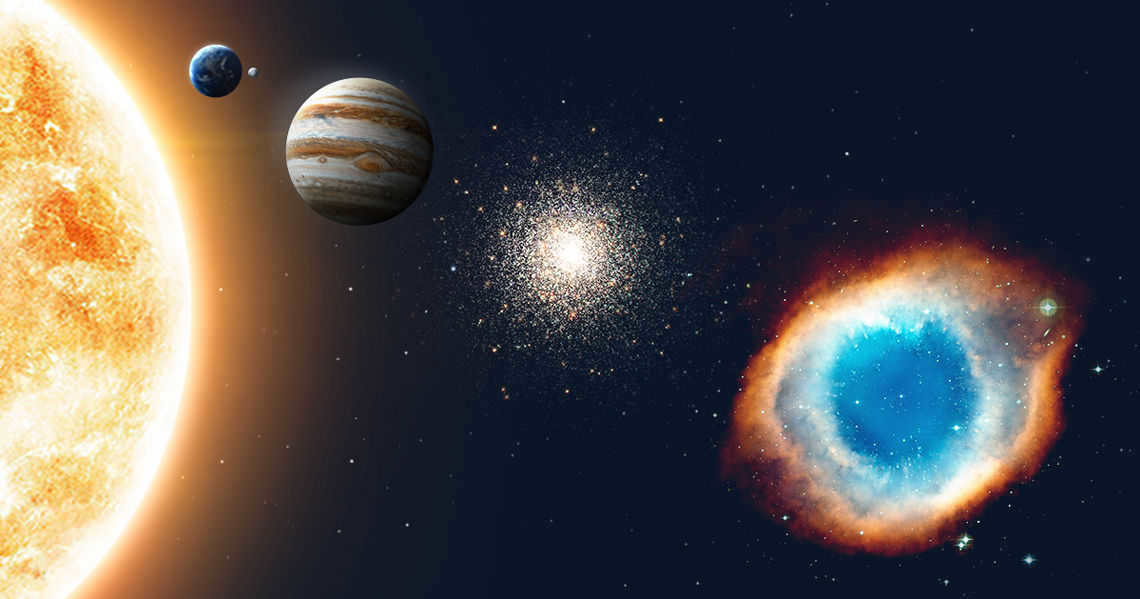
Which one is larger: the distance between the Moon and Earth, an astronomical unit, or a light-year? Take a look at our infographic to learn how astronomers utilize these concepts.
Who found the Kuiper belt?
The Kuiper belt is sometimes called the Edgeworth-Kuiper belt in tribute to astronomers Kenneth Edgeworth and Gerard Kuiper. However, they were not the original discoverers of the belt.
The concept of a ring of icy objects existing beyond the orbit of Neptune was first proposed in the early 1900s. Ever since Pluto was discovered in 1930, scientists have speculated that there could be other celestial bodies in its vicinity. In 1943, the Irish astronomer Kenneth Edgeworth put forward the idea that the outer region of our solar system is populated by numerous small celestial objects. This was his sole contribution to the discovery of what would later be known as the Kuiper belt. Then, in 1951, the Dutch astronomer Gerard Kuiper came up with a similar hypothesis, suggesting the existence of a belt made up of smaller objects located past Neptune. Interestingly, Kuiper himself believed that this belt no longer existed, as he thought that the gravitational pull of Pluto had scattered the objects into the Oort cloud. So, paradoxically, Gerard Kuiper was of the opinion that the Kuiper belt did not exist.
What led to the formation of the Kuiper belt?
The Kuiper belt, which currently exists in our solar system, is a result of the formation process that occurred approximately 4.6 billion years ago. During this time, the solar system originated from a cloud of gas and dust known as the solar nebula. While the majority of the matter in the nebula contributed to the creation of the Sun and planets, there were remnants that were left behind as small celestial bodies.
These remnants, known as Kuiper belt objects, are similar to the celestial bodies found in the main asteroid belt located between Mars and Jupiter. Interestingly, if it weren’t for the influence of the neighboring giant planet, the Kuiper belt could have potentially formed into a planet itself. However, due to the immense gravitational pull of Neptune, the small fragments of rock and ice were unable to merge together, resulting in the formation of the Kuiper belt as we know it today.
Kuiper Belt objects
The celestial bodies that exist in the Kuiper belt are referred to as Kuiper Belt objects. These objects are also known as Kuiper Belt Objects (KBOs) or Trans-Neptunian Objects (TNOs), according to NASA. There are currently over 2,000 KBOs that astronomers have discovered.
Unlike the main belt asteroids, which are primarily composed of rock, most of the Kuiper Belt objects are icy bodies made up of frozen methane, ammonia, and water. Additionally, they exhibit a wide range of colors, spanning from white to red to blue.
The size of Kuiper Belt objects can vary greatly, ranging from a few meters to over 2,000 km. The largest KBOs are the four dwarf planets: Pluto (2,376 km), Eris (2,326 km), Makemake (1,430 km), and Haumea (1,632 km). Furthermore, the Kuiper Belt also contains several candidates for dwarf planets, including Orcus, Quaoar, Gonggong, and Sedna.
The dwarf planets, including Gungun and Kwawar, have their own satellites, and Haumea is even equipped with a ring! Additionally, within the Kuiper belt, there are numerous double systems, consisting of two objects revolving around a shared center of mass. The prime example of such a double system is the Pluto-Haron system.
Moreover, it is believed that the Kuiper Belt serves as the origin of comets. Comets develop when the gravitational force of Neptune propels debris from colliding objects within the Kuiper Belt towards the Sun. Unlike the Oort cloud, which generates the majority of long-period comets, the Kuiper belt generates short-period comets with orbital periods of less than 200 years.
The Kuiper Belt and the Ninth Planet
An intriguing hypothesis has emerged from the study of Kuiper Belt objects. Astronomers Konstantin Batygin and Mike Brown made an interesting observation while studying a number of OPCs, noticing an unusual anomaly in their orbital distribution. In 2016, these scientists put forward a theory to explain this phenomenon: they proposed that the unique orbits of these objects could be attributed to the gravitational influence of a mysterious planet situated far beyond the orbit of Pluto! This hypothetical planet, approximately the size of Neptune, has been affectionately dubbed “The Ninth Planet”. According to calculations, it could possess a mass five to ten times that of Earth and an orbital period spanning about 10,000 Earth years. Despite not yet having been detected, astronomers remain determined in their search for this elusive celestial body.
Which spacecraft have made a journey to the Kuiper belt?
The sole spacecraft that has ventured close to Kuiper Belt objects is the New Horizons interplanetary station, operated by NASA. Launched in 2006, it successfully flew by Pluto in 2015. In 2019, the station went on to explore another designated object in the Kuiper Belt called Arrokot, setting a record for being the most distant solar system object ever visited by a spacecraft. The New Horizons mission team is now actively searching for a new object to investigate.
Currently, there are no scheduled missions to the Kuiper belt. However, scientists are contemplating the possibility of sending spacecraft to uncharted objects within the belt, such as Makemake and Haumea.
What is the largest celestial body in the Kuiper belt?
The celestial body of greatest size in the Kuiper belt is the dwarf planet Pluto, which measures 2,376 kilometers in diameter. Following closely behind is another dwarf planet named Erid, boasting a diameter of 2,326 km.
How many celestial bodies can be found in the Kuiper belt?
As a result of Neptune’s gravitational pull, no planets can be found within the Kuiper belt. However, it does house four out of the five officially recognized dwarf planets.These include Pluto, Erid, Makemake, and Haumea. The fifth dwarf planet, Ceres, can be found within the asteroid belt positioned between Mars and Jupiter.
What is the duration of the journey to the Kuiper belt?
It took the New Horizons Automated Interplanetary Station, which is the sole spacecraft to have ventured to the Kuiper Belt, a total of 9.5 years to arrive at Pluto. The station traveled at a velocity of 58,580 km/h and covered a distance of approximately 5 billion kilometers. It is worth mentioning that when it was launched in 2006, New Horizons held the title of being the swiftest spacecraft ever constructed.
What sets the Oort cloud apart from the Kuiper belt?
While both the Oort cloud and the Kuiper belt consist of a vast number of small icy objects, there are several key distinctions. Firstly, the Oort cloud is situated much further away, with it taking approximately 300 years for a spacecraft to reach its inner boundary. Additionally, unlike the Kuiper belt, the Oort cloud is not shaped like a disk but rather takes the form of a colossal spherical shell enveloping the entire solar system. It is estimated that the Oort cloud contains trillions of objects and is believed to be the primary source of long-period comets.
In summary: The Kuiper Belt is a large circle of icy objects located past Neptune’s orbit. It includes Pluto and various other small planets. Interestingly, the Kuiper Belt was named after the individual who anticipated its nonexistence. The examination of objects in the Kuiper Belt resulted in the theory of the Ninth Planet.
Situated at the outermost region of the solar system, extending beyond Neptune, is a region characterized by perpetual ice. It is referred to as the Kuiper Belt by astronomers.

In this distant location, away from the scorching star, there exist comets and asteroids that occasionally venture towards the radiant celestial body. It is plausible that these celestial bodies could have transported the essential element for life, water, to our planet Earth.
Controversy surrounds the objects within the Belt, as evidenced by recent collisions in the United States and the subsequent reclassification of Pluto as a non-planet. Scientists are fervently investigating this enigmatic region in order to unravel the mysteries of solar system evolution.
The Birth of the Kuiper Belt
Around 4.5 billion years ago, a powerful supernova detonated near a nebula made of gas and dust. This nebula began to collapse, resulting in the formation of our Sun and the larger planets. However, some of the matter from the collapse scattered and eventually formed the Kuiper Belt. But why didn’t these smaller fragments come together to create something more substantial?
- One hypothesis suggests that the gravity of Neptune prevented the pieces of rock and ice from attracting each other.
- Another hypothesis proposes that the ring originally existed closer to the Sun, which has an even stronger gravitational force. Over time, the movements of Uranus and Neptune caused the disk to migrate outward into the colder region.
Regardless of the explanation, the Kuiper Belt serves as a time capsule, preserving the material that contributed to the creation of our cosmic home.
What is the location of the Kuiper belt?
The Kuiper belt is located beyond the orbit of Neptune, which is approximately 30 astronomical units away from the Sun. This region extends up to 50 astronomical units, equivalent to about 4.5 billion and 7.4 billion kilometers respectively. It is worth noting that the exact outer boundary of the Kuiper belt is not clearly defined, but scientists have data suggesting that it may extend up to a distance of 1,000 astronomical units.
How does the size of the Kuiper belt compare to the Main Asteroid Belt between Jupiter and Mars? The Kuiper belt is about 20 times wider than the Main Asteroid Belt.
The Unveiling of the Kuiper Belt
The story began with the remarkable discovery of Uranus by William Herschel in 1781. Several years later, astronomers observed that the planet’s movement deviated from the predicted orbit, indicating the presence of a significant celestial body nearby. In 1846, Neptune was identified and named, bringing both excitement and disappointment as it was found to be just one of the objects causing disturbances in Uranus’ trajectory…
In 1915, the renowned American astronomer Percival Lovell embarked on a quest to uncover the source of this anomaly. With his own observatory, he diligently observed the solar system. However, it was only after Lovell’s passing that his colleague, Clyde Tombaugh, caught a glimpse of the elusive Planet X. Amidst hundreds of thousands of images, the future Pluto was spotted – a rather unassuming find!
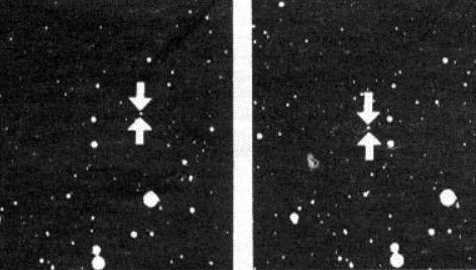
The initial photographs of Pluto were taken in 1930.
Once again, another unsuccessful attempt. Pluto is small and faint, and its composition remains uncertain. It does not have enough influence to alter the path of Uranus. Hence, there must be another celestial object located beyond the orbit of Neptune.
Various theories were proposed, including an expelled comet, a massive asteroid, or meteorites. However, in 1943, an Irishman named Kenneth Edgeworth put forward the idea that there is an entire belt of icy bodies residing at the edge of the solar system. Interestingly, the ring was not named after Edgeworth, but after the scientist who initially denied its existence. Gerard Kuiper believed that the cluster behind Neptune had already dispersed, and the comets had scattered over a significant distance.
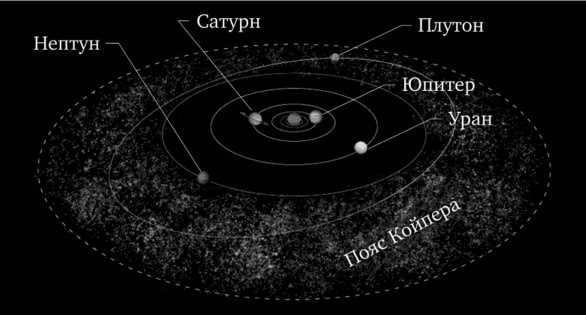
The Kuiper Belt and the Oort cloud.
Scientists have long been puzzled by the origin of comets that make their way to the center of our solar system. In 1950, Dutch astronomer Jan Hendrik Oort proposed the idea that there is a massive cloud of icy nuclei surrounding the solar system. These nuclei are located at a distance of up to 100,000 astronomical units from the Sun. Occasionally, due to the gravitational influence of neighboring stars, some comets from this cloud make their way towards the center of the solar system.
However, in 1980, Julio Fernandez made an important observation: the Oort cloud alone cannot account for the number of icy bodies that are known to exist in our solar system. There must be another significant source of comets, and that source is known as the Kuiper belt.
How do they differ? The belt is characterized by its smaller size, disk-like shape, and proximity to the host star. On the other hand, the Oort cloud stands out as a massive spherical shell located 100 times further away from the center. It encompasses both the planetary system and the ring.
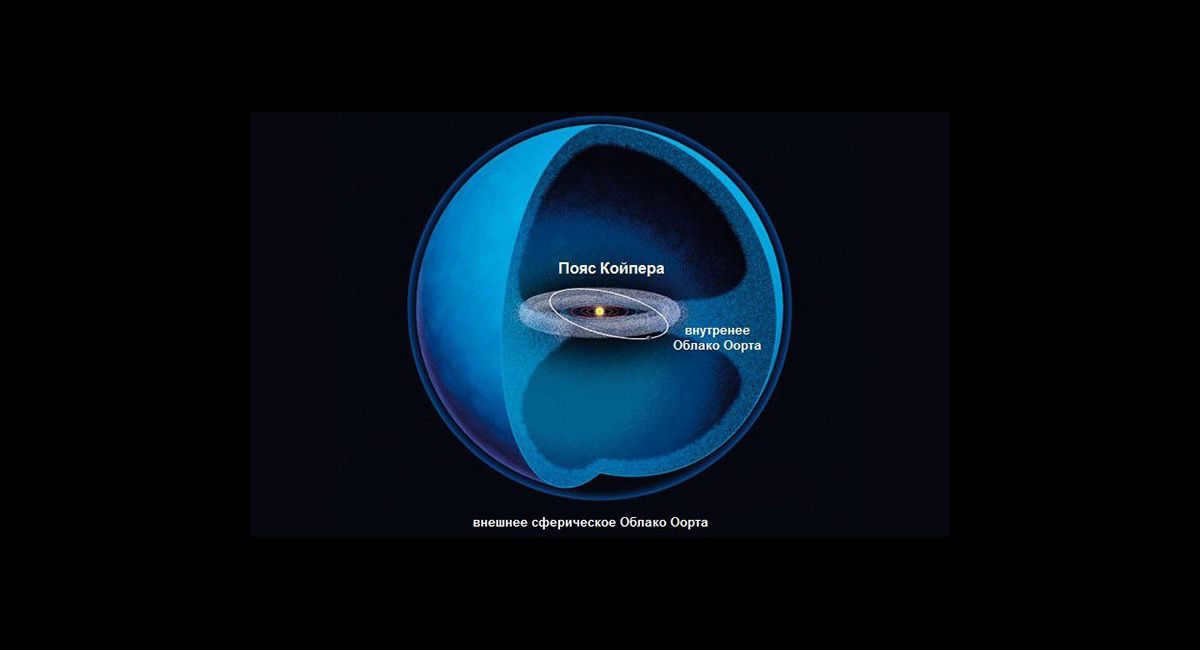
Understanding the Composition of the Kuiper Belt
Transneptunian objects (TNOs) primarily consist of frozen compounds such as ammonia, methane, nitrogen, and water. Additionally, carbon and oxygen can be found in certain regions.
The precise number of objects within the Kuiper Belt remains unknown, with estimates ranging around 10 billion. It is believed that the total mass of these objects is equivalent to approximately 1.3-2% of the Earth’s mass. However, calculations suggest that comets, planets, and asteroids should have a mass 30 times greater than that of our planet. As a result, scientists are exploring potential zones where additional “inhabitants” might be hiding beyond our solar system.
The Kuiper Belt, initially discovered and subsequently rejected by Kuiper, includes:
- Classic objects – exhibiting circular and inclined orbits similar to those of regular planets.
- Scattered disk objects are located at extremely far distances, reaching up to 2,000 astronomical units (a.u.).
The sizes of these celestial bodies range from 50 to 2,700 km. While some objects can be observed through telescopes, others are known only through theoretical data derived from mathematical models. As of 2020, over 2,700 trans-Neptunian objects (TNOs) have been identified, each with its own unique composition.
The most prominent entities within the Kuiper Belt
Pluto stands out as the largest identified object within the Kuiper Belt. It boasts a diameter measuring 2,376 km and possesses a mass equivalent to 0.02% of Earth’s mass. Unlike other celestial bodies, Pluto lacks an iron-nickel core. Instead, its interior predominantly consists of water and nitrogen ice. Additionally, the planet possesses a relatively thin atmosphere.
The presence of numerous celestial bodies resembling Pluto has prompted scientists to question their classification as planets. In 2006, the International Astronomical Union (IAU) issued a ruling on the matter. According to the IAU, if a celestial body fails to clear its orbit by either repelling or attracting neighboring objects of similar mass, it cannot be classified as a traditional planet. Consequently, Pluto was designated as a member of the dwarf planet family. This decision caused quite a stir, particularly in the United States, where some states even enacted legislation prohibiting the use of the term “dwarf” to describe Pluto. The controversy certainly made waves!
Meanwhile, other significant DICs are being researched worldwide:
- Eridus, the dwarf planet, has a diameter of 2,326 kilometers;
- Haumea, one of the fastest dwarf planets, measures 1,632 kilometers;
- Makemake, a dwarf planet with a primarily nitrogen atmosphere, has a diameter of 1,430 kilometers;
- Kwawar, a rock and ice object, spans 1,260 km;
- Gungun, also known as 2007OR10, is a faint body with a diameter of 1,250 km;
- Charon, Pluto’s largest satellite, has a diameter of 1,200 kilometers;
- Sedna, a bright red object without an atmosphere, measures 1,000 km and is currently being studied for its chemical composition;
- Ork, measuring 946 kilometers, is potentially a dwarf planet.
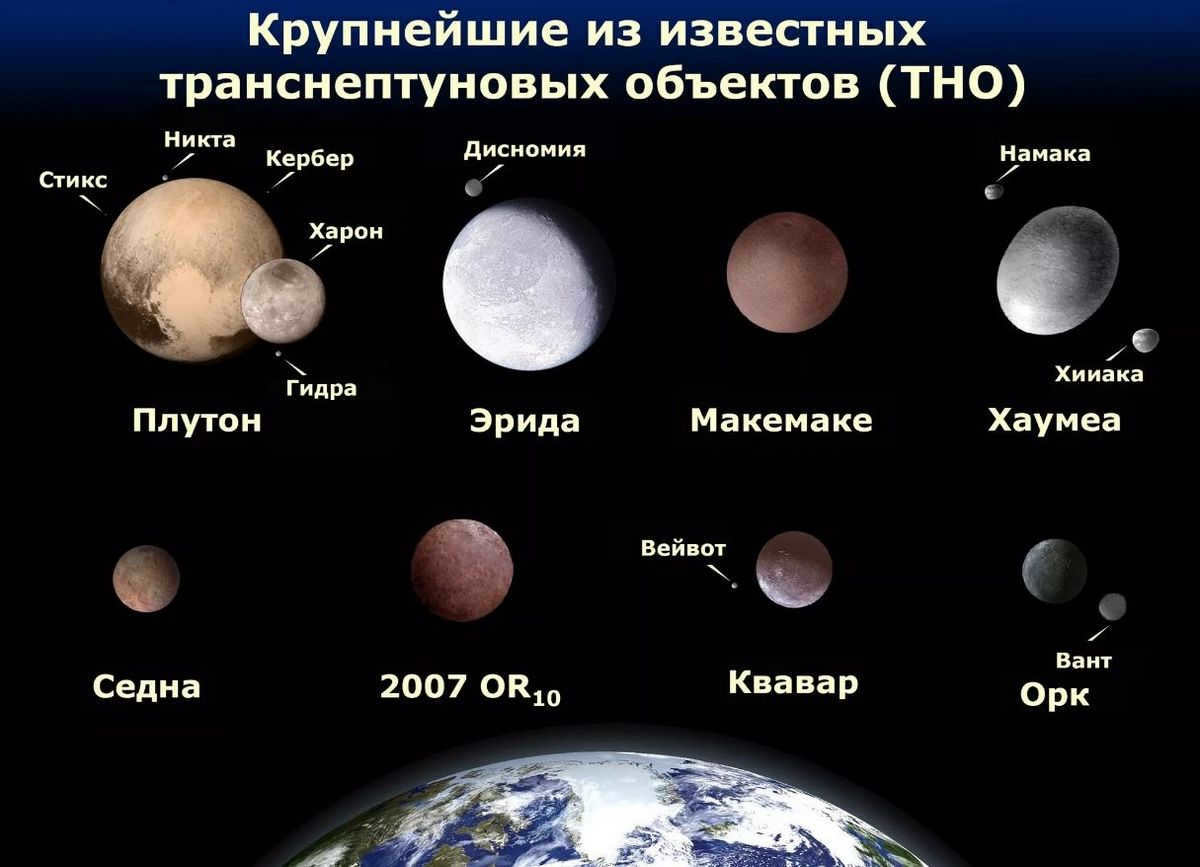
Unveiling the Secrets of the Kuiper Belt
Astronomers Konstantin Batygin and Mike Brown have made a fascinating discovery regarding the distribution of Trans-Neptunian Object (TNO) orbits. They have observed an anomaly where the trajectories are skewed towards one side. This peculiar behavior can only be explained by the presence of a massive celestial body, approximately five times the size of Earth. This hypothetical planet, known as the Ninth Planet, has significantly influenced the orbits of comets within the Kuiper Belt.
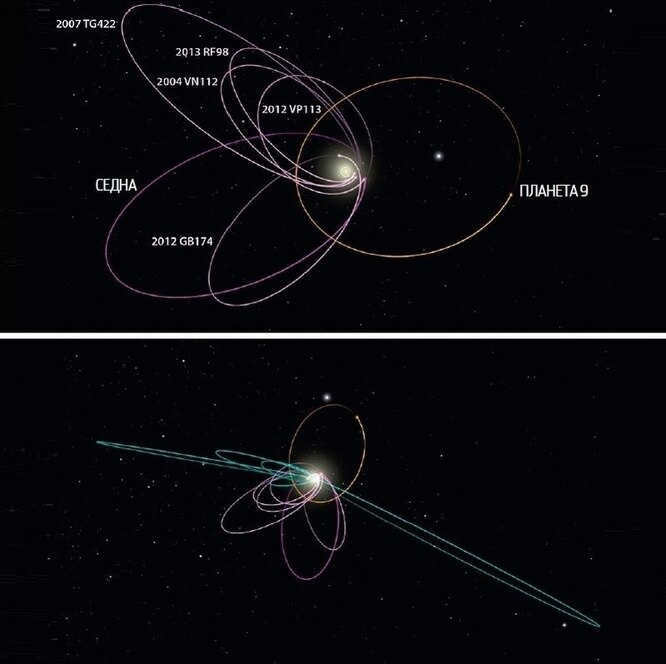
Once again, astronomers are on the hunt for the primary force of gravitation, examining photographs. Fortunately, these images are no longer limited to those captured by telescopes alone. In 2006, NASA’s New Horizons spacecraft was launched towards a cluster of frozen debris, reaching an unprecedented speed of 16.21 kilometers per second. In 2015, the spacecraft flew by Pluto, providing scientists with astounding high-resolution images that revealed the intricate details of its surface.
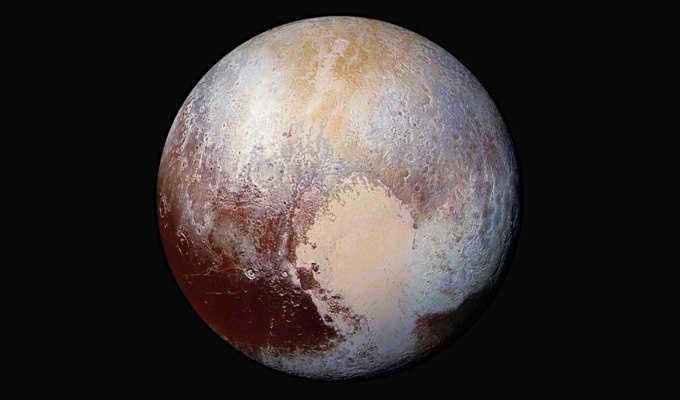
The investigation is ongoing into the Kuiper Belt and it will never come back to Earth. It is expected that by 2700, this impressive piece of technology will have departed the solar system and ventured into the vast Oort cloud. I am curious about the wealth of information we will have on comets by that time.
The trans-Neptunian region has been a subject of study for astronomers since the early 20th century. Initially, their focus was on finding an elusive planet, which was predicted by Urbain Leverrier. The discovery of Pluto in 1930 sparked further exploration and led to the development of new theories. One such theory suggests that there are numerous objects similar to Pluto beyond Neptune’s orbit. To date, astronomers have identified around 2000 trans-Neptunian objects, but it is believed that there are actually more than 70000.
What is the Kuiper Belt?
The Kuiper Belt, also known as the Kuiper belt, is a vast collection of numerous large and small objects primarily composed of ice. These objects are the remnants of celestial bodies that were not incorporated into the formation of our solar system. The Kuiper Belt takes the form of a ring, similar to the asteroid zone situated between Mars and Jupiter, although it is considerably larger in size.
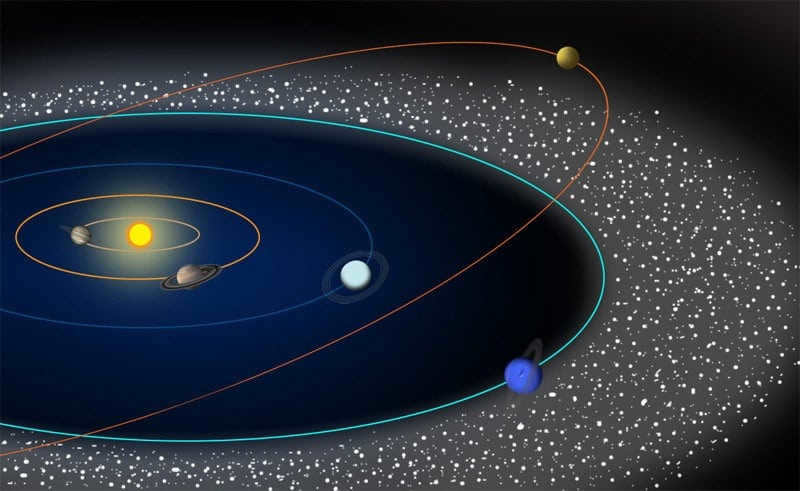
Origin of the Kuiper belt
The source of this celestial entity remains obscure, sparking debates within the global scientific community.
Multiple hypotheses have been proposed to elucidate the genesis of the Kuiper belt.
- One theory posits that the belt originated from remnants of the solar system, although its formation would have been impossible without the presence of Neptune. The ice giant’s gravitational field prevents space bodies from attracting one another and coalescing into a larger object.
- Another hypothesis suggests that the Kuiper belt initially formed closer to the Sun before being perturbed by the gravitational movements of Uranus and Neptune. This gravitational influence propelled millions of small icy objects to a more distant and colder region of the solar system.
Location and composition
The Kuiper belt is situated beyond the orbit of Neptune, at a distance of approximately 30AU (astronomical units) from the Sun, and stretches out until around 50AU.
The precise number of objects in the Kuiper Belt has yet to be determined. Their collective mass is less than 2% of the Earth’s mass, although astronomers predict it to be 30 times greater. The question of where the main mass of the Kuiper belt is concentrated remains unanswered.
Qualitatively speaking, the trans-Neptunian region can be described as a collection of small icy bodies that are arranged in a donut-like shape. The composition of the Kuiper belt was identified through analyzing the spectral properties of reflected light. Upon studying the data, it became evident that the majority of objects in this area contain solid methane, ammonia, and ice. By using these findings, computer simulations were able to demonstrate that certain larger fragments possess a thin atmosphere comprised of low-density methane. Consequently, all objects can be classified into the following categories:
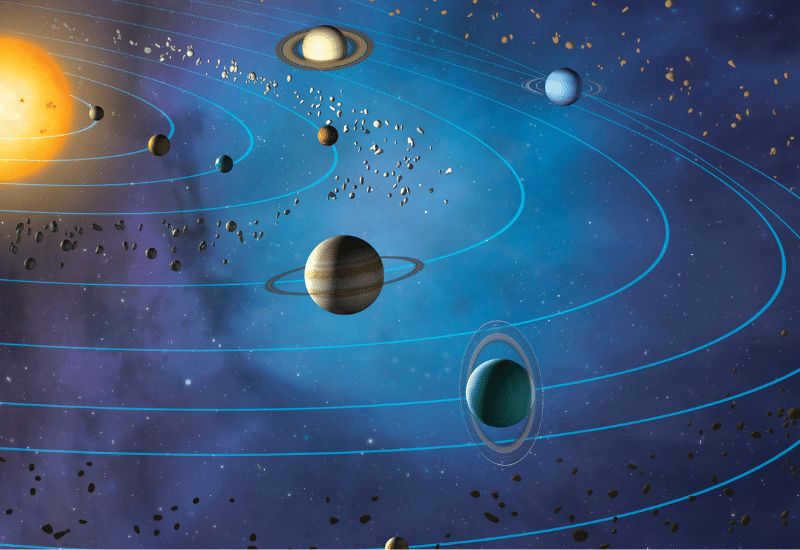
- Traditional Kuiper Belt objects. They are also known as “cubivanos.” These objects have a spherical shape and an inclined orbit, making them very similar to planets. Currently, there are around a dozen of them, totaling 520.
- Resonating objects. These bodies have orbits that are in resonance with Neptune’s orbit. They have a combined mass of up to 20%.
- Dispersed objects. These objects have an eccentricity that causes their orbital center to be several astronomical units away from the Sun. Some scientists refer to them as trans-Neptunian formations.
The Kuiper belt’s discovery
In the 1940s, Kenneth Edgeworth proposed the theory that planets and meteorites exist beyond Neptune’s orbit. His research on trans-Neptunian objects was published in 1943. Edgeworth observed that the strong dispersion of these objects hindered the formation of a single large planet. Colleagues highly praised Edgeworth’s contribution to the study of the icy belt, leading to its double name, the “Edgeworth-Kuiper Belt.”
Gerard Kuiper, the namesake of the trans-Neptunian region, hypothesized in 1951 the existence of a zone containing icy objects surrounding the Solar System. Subsequent research confirmed Kuiper’s hypothesis.
The subsequent phase of research on the belt was conducted by astronomer David Javitt and his graduate student Jane Luu in 1992. In that year, scientists made the groundbreaking discovery of the initial celestial body (following Pluto) within the Kuiper belt, and this breakthrough was followed by the identification of a second object six months later.
Currently, astronomers have successfully detected over 2000 more substantial entities within this particular assemblage.

The most massive Kuiper Belt objects
Due to the immense distance between Earth and the Kuiper Belt, conducting visual studies of celestial bodies in this region is a challenging task. Scientists invest years in observations and subsequent analysis of the collected data in order to obtain reliable results. This is the reason for the limited amount of information available about the Kuiper Belt.
Extensive research has been conducted on the largest objects within the Kuiper Belt:
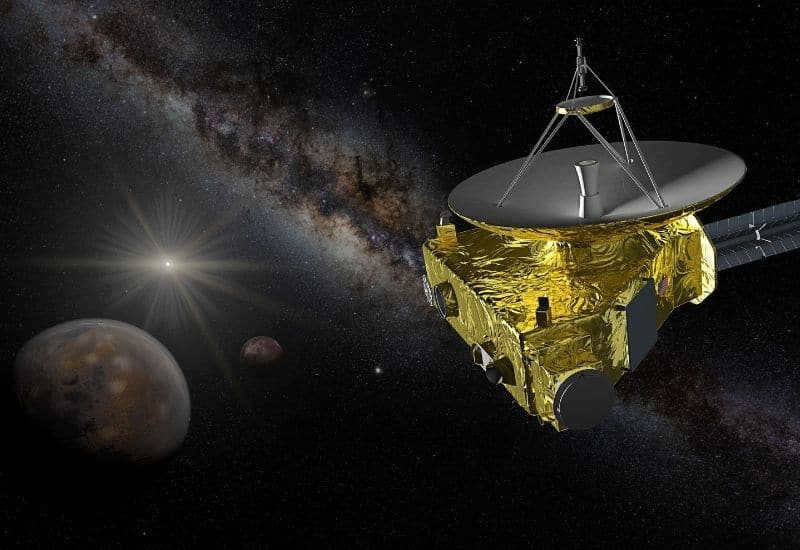
- Haumea, the most unique planet in this celestial band, is believed to have formed from the collision of two cosmic objects. Haumea possesses two moons of its own, Hiaka and Namaka, which it drags along as it rotates on its axis at an incredibly high speed. These moons complete an orbit around Haumea every four hours. The rapid rotation causes Haumea to be flattened at its poles.
- Sedna, named after the ice goddess of the northern peoples, has an orbital period of 10,500 years around the Sun. However, there is some controversy surrounding Sedna as its orbit extends beyond the boundaries of the solar system, leading some astronomers to dispute its classification as a member of the Kuiper belt.
- Pluto – is renowned as the predominant entity in this vicinity. For a span of seventy-six years, Pluto held the esteemed position of the ninth planet. Nevertheless, it is presently classified as a planetary dwarf.
- Charon. A multitude of astronomers regard the Pluto-Charon alliance as a binary planetary system. The close proximity of these entities has resulted in the coalescence of their atmospheres. However, their gaseous envelopes possess a noteworthy disparity. Charon’s atmosphere is comprised of frozen water, while Pluto’s atmosphere is composed of frozen nitrogen.
- Quavar – is one of the largest objects in the Kuiper belt, measuring around 1,300 kilometers in diameter. The composition of this celestial body consists of a mixture of rock and water ice. Quavar’s surface temperature does not rise above -220°C. Orbiting around Quavar is its satellite Wavot, which has a diameter of approximately 100 kilometers.
- Makemake has an orbital period of 306 years around its central star. The entire surface of this small planet is covered with a layer of snow and ice made of methane. Makemake possesses an atmosphere, although it is unstable and easily blown away by the cosmic wind.
Exploring the Kuiper Belt
Exploration of the transneptunian region is conducted using the orbiting telescopes “Herschel” and “Kepler”. These telescopes have provided valuable data on the size and composition of the outer layer of the newly discovered planet 2007 OR10.
In 2006, NASA launched the “New Horizons” space probe towards Pluto. This probe conducted close-range studies of Pluto, Charon, and four small moons. It also provided valuable insights into the previously unknown asteroid Arrokot. The limited knowledge about the Kuiper Belt has been significantly expanded thanks to this mission. Currently, the New Horizons spacecraft is on its way out of the solar system. It is expected to continue transmitting data until the year 2035.
As our knowledge about most trans-Neptunian objects is limited, conducting research on them holds significant importance. Within the Kuiper Belt lies one of the most renowned celestial bodies, Halley’s Comet, which makes a close approach to the Sun every 75 years.
The Future of the Kuiper Belt
Gerard Kuiper postulated that the current aggregation of icy entities beyond Neptune will eventually disperse. He attributed this theory to the belt’s high density. Continuous collisions break down the space objects into particles, which are then carried away by the cosmic wind. The scientific astronomical community posits that after an extremely lengthy existence, this region of space will vanish without leaving a trace.
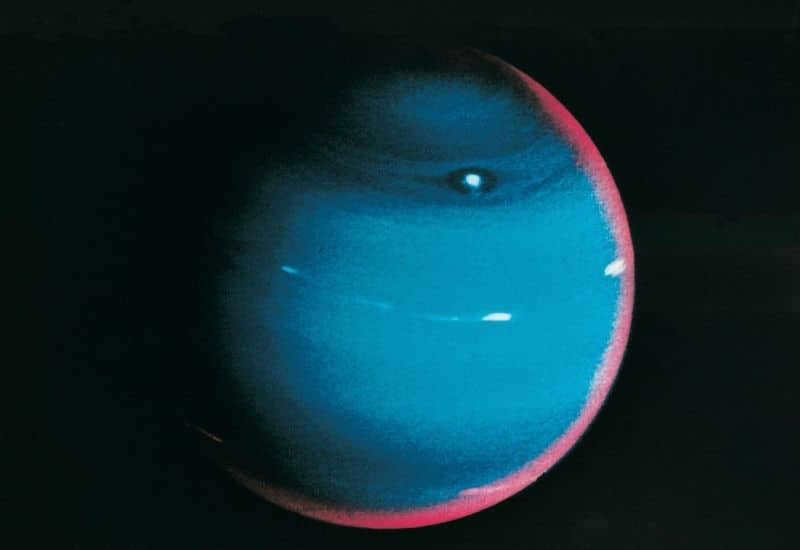
Fascinating information about the Kuiper belt
There are several intriguing facts about this celestial body:
- The Kuiper belt, also known as the kuiper belt, shares the same age as the solar system.
- In 2015, scientists in California conducted calculations that suggested the possible existence of an additional planet beyond the Kuiper cluster. If this hypothesis is proven true, it would significantly alter our understanding of the solar system’s evolution.
- Many of the recognized objects within the Kuiper Belt possess a complex structure: they either have satellites in close proximity or are part of a dual celestial object system.
- The Kuiper Belt harbors two clusters of asteroids known as the Greeks and Trojans. These clusters occupy unique positions, forming equilateral triangles with sides corresponding to the path from Jupiter to the Sun.
- Other star systems have also been discovered to have similar space rings.
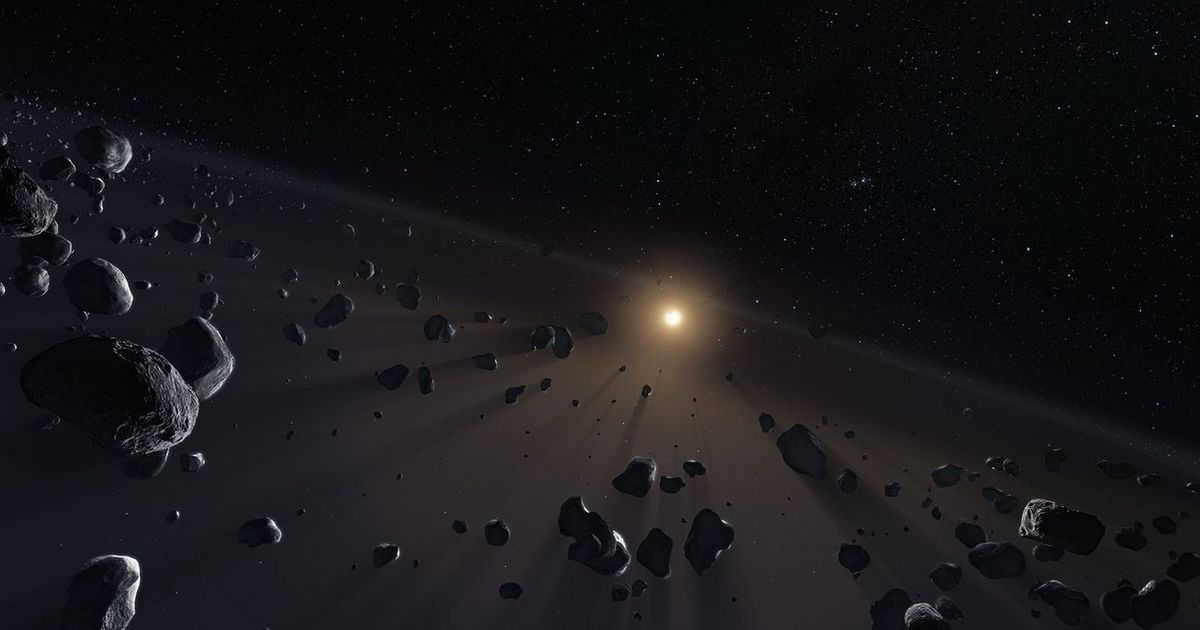
The Kuiper Belt is a rounded area of frozen bodies located beyond Neptune’s orbit. It stretches from the orbit of Neptune (30 AU) to approximately 50 AU from the Sun. This region contains millions of objects, primarily composed of icy substances.
Shortly after the discovery of Pluto in 1930, scientists started to speculate about the possibility of other objects existing in the outer regions of the solar system.
It wasn’t until 1992 that the presence of additional objects in this region was confirmed. These objects turned out to be a large collection of debris situated at the outermost edge of the solar system. They collectively form what is now known as the Kuiper Belt.
Moreover, numerous astronomers speculated about the presence of the Kuiper Belt many years prior to its detection. It is an extensive and enigmatic region that we have only recently started to investigate. Let us delve further and ascertain the nature of the Kuiper belt, its location, and the process by which it came into existence.
The Kuiper Belt is a circular area of frozen objects located past Neptune’s orbit. Similar to the asteroid belt, it is comprised of numerous small remnants from the creation of our solar system.
These icy entities are alternatively referred to as trans-Neptunian objects (TNOs) or Kuiper belt objects.
It’s important not to mistake the Kuiper Belt for the Oort Cloud, which is a more remote realm of comet-like bodies encompassing both the Kuiper Belt and the solar system.
Geographical location and chemical composition
The region known as the Kuiper Belt can be found in the outer reaches of our solar system, stretching from the orbit of Neptune, which is approximately 30 astronomical units (AU) or 4.5 billion kilometers away from the Sun, all the way to about 50 AU or 7.5 billion kilometers from our star.
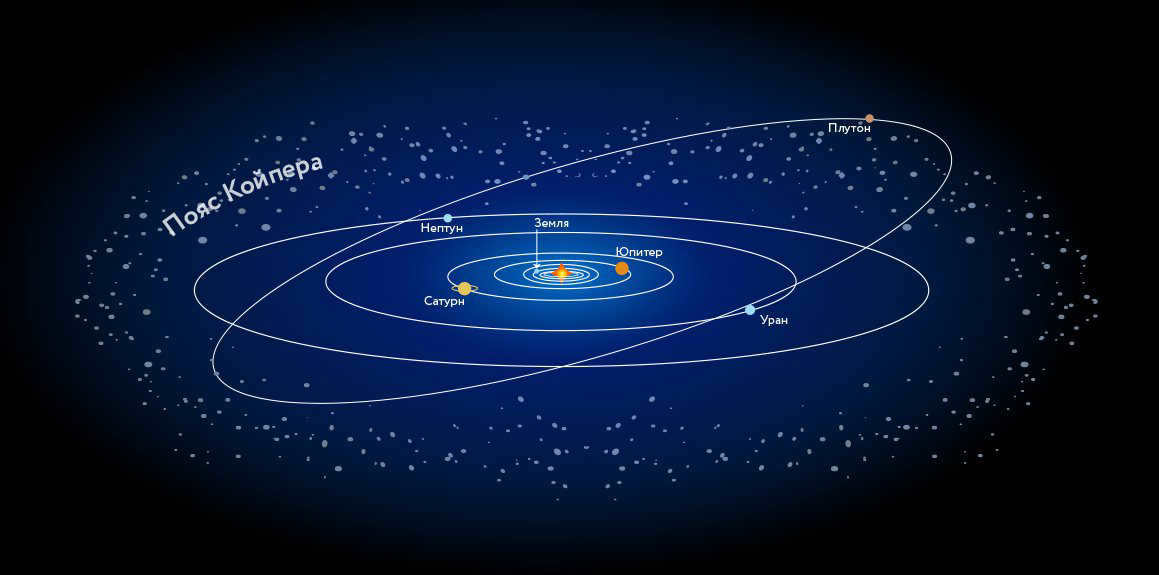
The Kuiper Belt, which is located between the orbits of Mars and Jupiter, is much wider and more massive than the asteroid belt, being twenty times larger in size and twenty to two hundred times heavier.
Within the Kuiper Belt, there are numerous dwarf planets such as Pluto, Eris, Haumea, and Makemake. The majority of objects in this region are composed of icy volatiles like water, ammonia, and methane.
While the Kuiper Belt is known for its hundreds of thousands of moons, some research suggests that it may have also generated larger satellites such as Saturn’s Phebe and Neptune’s Triton.
Despite the fact that scientists do not completely understand the origin of the Kuiper Belt and its intricate structure, it is believed that it contains remnants from the early stages of the solar system.
In the absence of Neptune, the icy objects in this region could have merged together to form a planet. However, the gravitational force of Neptune has disrupted this area of space to such an extent that these icy objects would not have been able to combine into a single planet.
According to the Nice model, which presents a scenario explaining the dynamic evolution of the solar system, the Kuiper Belt could have initially formed closer to the Sun than its current position. Uranus and Neptune engaged in a complex celestial dance, swapping places and moving outward within the solar system.
As the two planets moved further away from the Sun, their gravitational force likely pulled most of the icy objects in the Kuiper Belt along with them. Consequently, many of these small icy objects have been relocated from their original positions to a colder area within the solar system.
Who was the first to discover the Kuiper belt?
The Kuiper Belt is named after Dutch astronomer Gerard Kuiper, although he did not propose its existence. However, his research was widely known among scientists, so the general concept of the Kuiper Belt began to be associated with him.
In 1943, an independent theoretical astronomer named Kenneth Edgeworth published a paper in which he theorized that materials beyond Neptune’s orbit were too widely scattered to form into planets.
Instead, these materials aggregate into a number of smaller bodies in the outer area of the solar system. Periodically, some of these bodies depart from their region and appear as sporadic visitors to the inner solar system, which are known as comets.
Thanks to Edgeworth’s remarkable research, scientists occasionally refer to the Edgeworth-Keuper Belt as an alternative name to honor him.
In 1992, astronomer David Jevitt and his student Jane Luu made the discovery of the 1992 CWO candidate QB1. This marked the first finding of a Kuiper Belt object after Pluto and Charon. Almost half a year later, they stumbled upon a second object (181708) 1993 FW.
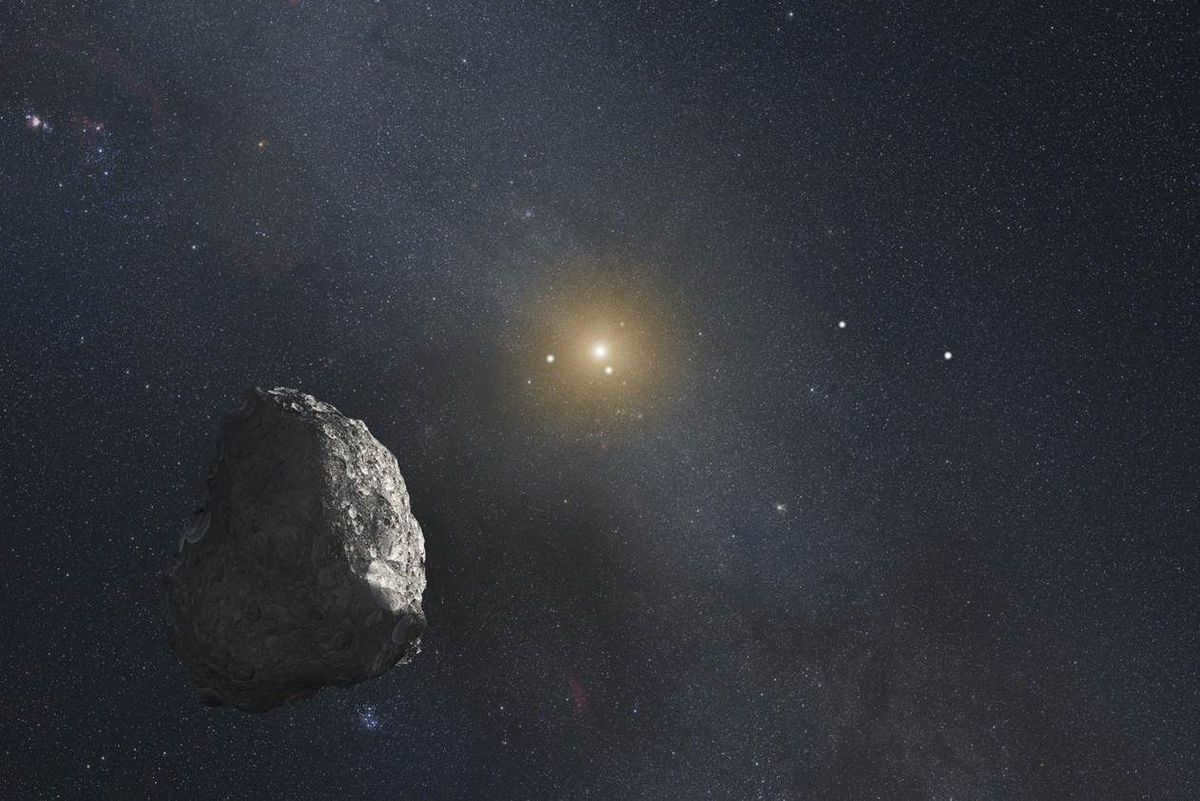
Up until this point, astronomers have found over 2,000 entities within the Kuiper Belt, and it is estimated that there are over 100,000 substantial entities exceeding 100 kilometers in size within this region.
7 fascinating details concerning the Kuiper Belt.
A significant number of objects in the Kuiper Belt possess moons or exist as double objects. Satellites are smaller bodies that orbit larger objects. It is possible for an object in this region to have multiple moons. Examples of Kuiper Belt objects with moons include Quavar, Haumea, Eris, and Pluto.
Dual objects, on the contrary, refer to pairs of objects that are relatively equal in mass or size. They revolve around a shared center of mass located between them.
2- They have a significantly lower mass compared to the Earth.
Despite its vast expanse, the Kuiper belt contains less than 2% of the Earth’s total mass.
This goes against conventional models, which suggest that the Kuiper belt should have a mass 30 times that of the Earth. The mystery of the missing 99% of its mass remains unsolved.
However, some scientists speculate that the objects within the Kuiper belt are gradually colliding and breaking apart, resulting in the formation of dust. As a result, the Kuiper belt is likely to eventually dissipate in the distant future.
3. The Kuiper belt: the birthplace of comets
One of the fascinating regions where comets originate from is the Kuiper belt. Within this belt, collisions between objects occur, giving rise to smaller fragments. These fragments can then be influenced by Neptune’s gravitational force, causing them to adopt orbits that direct them towards the Sun.
Jupiter’s immense gravitational pull plays a crucial role in the trajectory of these fragments, guiding them into short loops that last for a maximum of two decades. These fragments are commonly referred to as Jupiter family comets.
Although the majority of these comets eventually enter a dormant state, astronomers have made remarkable discoveries of near-Earth asteroids that bear a striking resemblance to burnt-out comets. Detailed observations indicate that these comets would have originated from either the Kuiper Belt or the Oort Cloud.
The initial detection of the Kuiper Belt’s inaugural entity, Pluto, took place in 1930. Back then, scientists were completely unaware of the spatial arrangement of astral bodies within the outermost realm of our solar system. Despite the peculiar path of Pluto’s orbit, researchers were under the impression that it stood as a solitary celestial entity.
However, upon the unveiling of a subsequent entity within the Kuiper Belt in 1992, researchers were struck with the realization that Pluto was not the sole occupant of this region: in fact, there exist countless minuscule icy objects revolving around the Sun in this particular domain.
5. The biggest things in the Kuiper belt
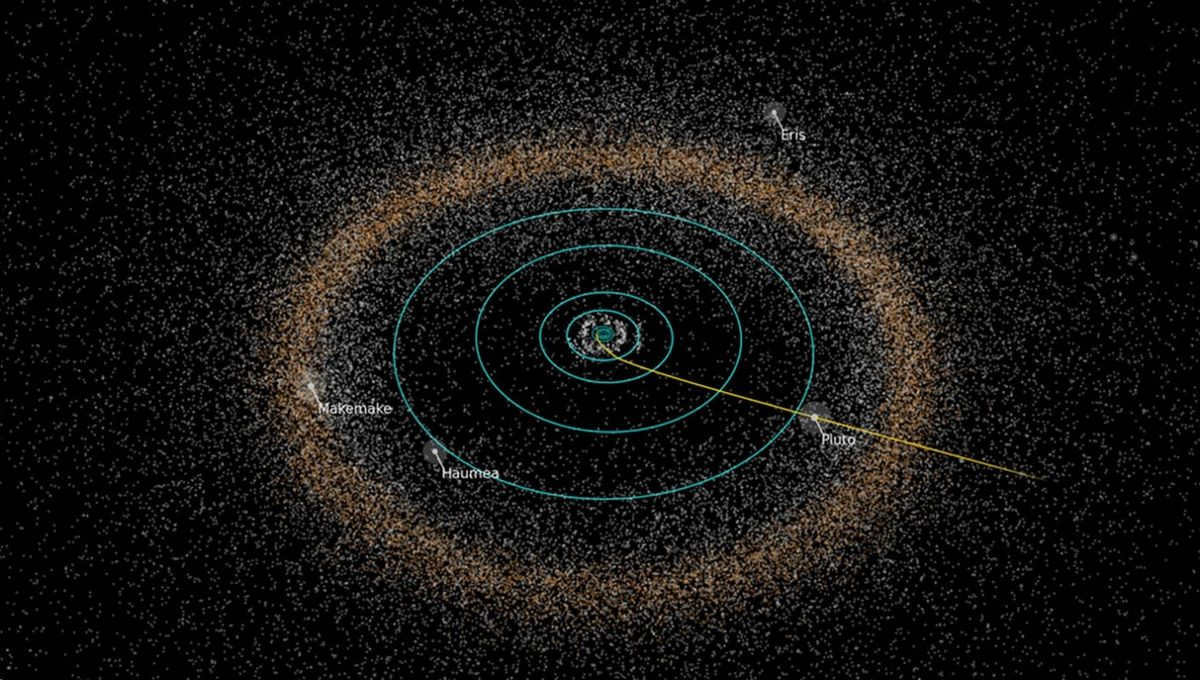
When it comes to their size, the top five Kuiper Belt objects are
- Pluto (1188 km) : the largest icy dwarf planet currently known.
- Erida (1163 km) : the second largest and most massive dwarf planet in our solar system.
- Haumea (780 km) : the dwarf planet with the fastest rotation and a ring around it.
- Makemake (715 km) : potentially a dwarf planet with its own companion, S / 2015 (136472) 1.
- Kwawar (555 km) : a possible dwarf planet with an estimated density of 2.2 g / cm 3.
In 1983, Pioneer 10 achieved the historic milestone of becoming the inaugural spacecraft to venture beyond the orbit of Neptune. At that time, the existence of the Kuiper Belt had not yet been unveiled, thus preventing the space probe from conducting any investigations of the icy celestial bodies residing within that region.
Subsequently, in 2006, NASA’s New Horizons probe was launched, marking the first interplanetary mission specifically designed to traverse the Kuiper Belt and conduct comprehensive studies of one or more of its enigmatic objects in the ensuing decade.
During its momentous journey, the spacecraft successfully conducted a close flyby of Pluto and its accompanying moons in July 2015, amassing valuable data pertaining to their atmospheres and surfaces. Furthermore, in 2019, it executed another close flyby, this time of an object known as 486958 Arrokot located within the confines of the Kuiper Belt.
7. Some Kuiper Belt objects may be explained by a theoretical planet
In 2015, scientists at the California Institute of Technology discovered mathematical proof indicating the existence of a distant planet known as “Planet X.” Although it has not yet been directly observed, calculations strongly support its presence in our solar system.
This yet-to-be-explored planet’s gravitational force could potentially account for the unusual paths taken by at least five small icy objects in the Kuiper belt. The discovery of these objects would revolutionize our understanding of how the solar system has evolved over time.
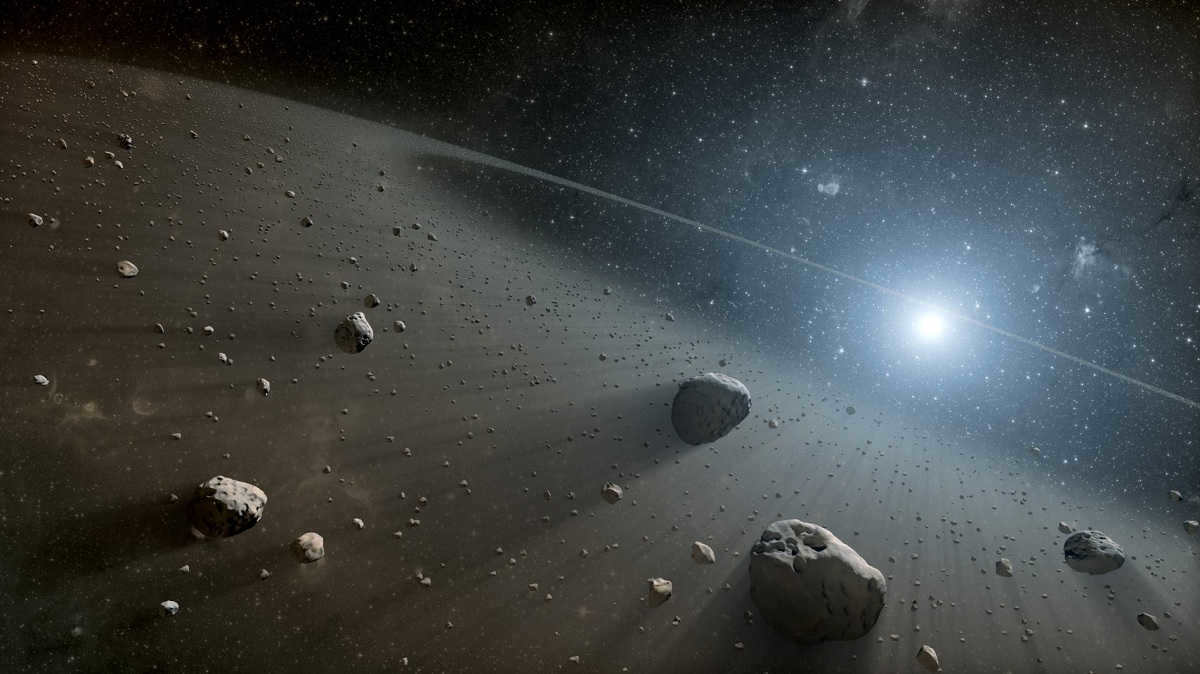
It is common knowledge that the solar system does not abruptly end once we surpass the orbit of the planet Pluto. In reality, the solar system extends further out into what is known as the Kuiper belt. In order to reach this region, one must venture beyond Neptune and Pluto, to the farthest reaches of our solar system. The farthest object that has been reached by a spacecraft is currently Arrokot (2014 MU69), which was explored in the Kuiper belt. This region of the solar system is characterized by extreme cold and darkness, and it holds great significance as it provides valuable insights into the formation of our solar system.
Therefore, we will provide you with comprehensive information about the Kuiper belt, including its unique characteristics and its origins.
The Definition of the Kuiper Belt
The Kuiper Belt is a region of space that extends beyond the orbit of Neptune and is home to many small icy bodies, including dwarf planets like Pluto. It is named after Gerard Kuiper, a Dutch-American astronomer who predicted its existence in 1951. The Kuiper Belt is similar to the asteroid belt, but it is much larger and contains a different population of objects. The belt is believed to be the source of short-period comets, which are comets that orbit the Sun in less than 200 years. The Kuiper Belt is an important area of study for astronomers because it can provide insights into the early formation of the solar system and the processes that shaped it.
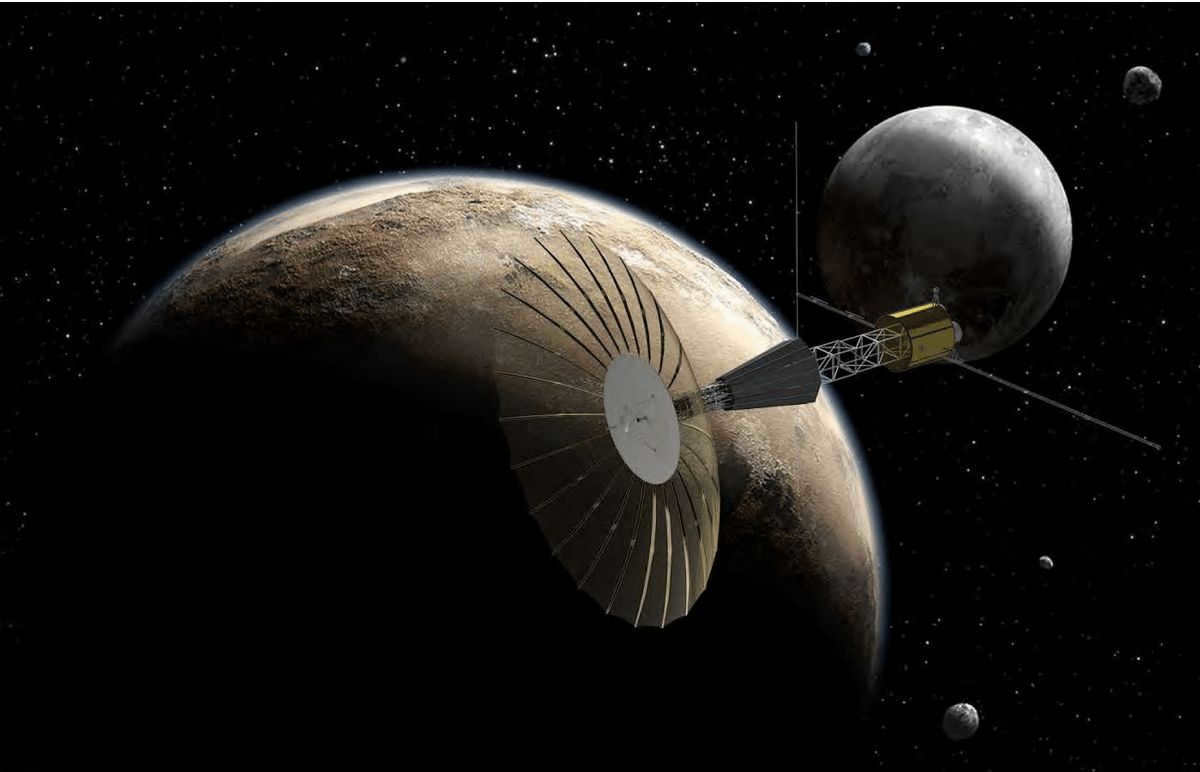
The Kuiper belt is a torus-shaped area (known as Thor in geometry) that holds countless frozen solid objects. These objects are commonly referred to as Kuiper belt objects.
This is a celestial zone teeming with millions of bodies that may have had the potential to form planets, but the gravitational pull of Neptune has disrupted the cohesion of these objects, preventing their amalgamation into a larger planetary body. In this regard, the Kuiper belt shares some similarities with the main asteroids that encircle Jupiter within the solar system.
The Kuiper belt is still an uncharted territory in space, remaining largely enigmatic and unexplored. Despite the discovery of Pluto in 1930 and the prediction of an icy object belt beyond Neptune, it is worth mentioning that the first asteroid in this part of the solar system was not found until 1992. The investigation and comprehension of the Kuiper belt is crucial in order to gain insights into the genesis and structure of the solar system.
The formation of the Kuiper Belt
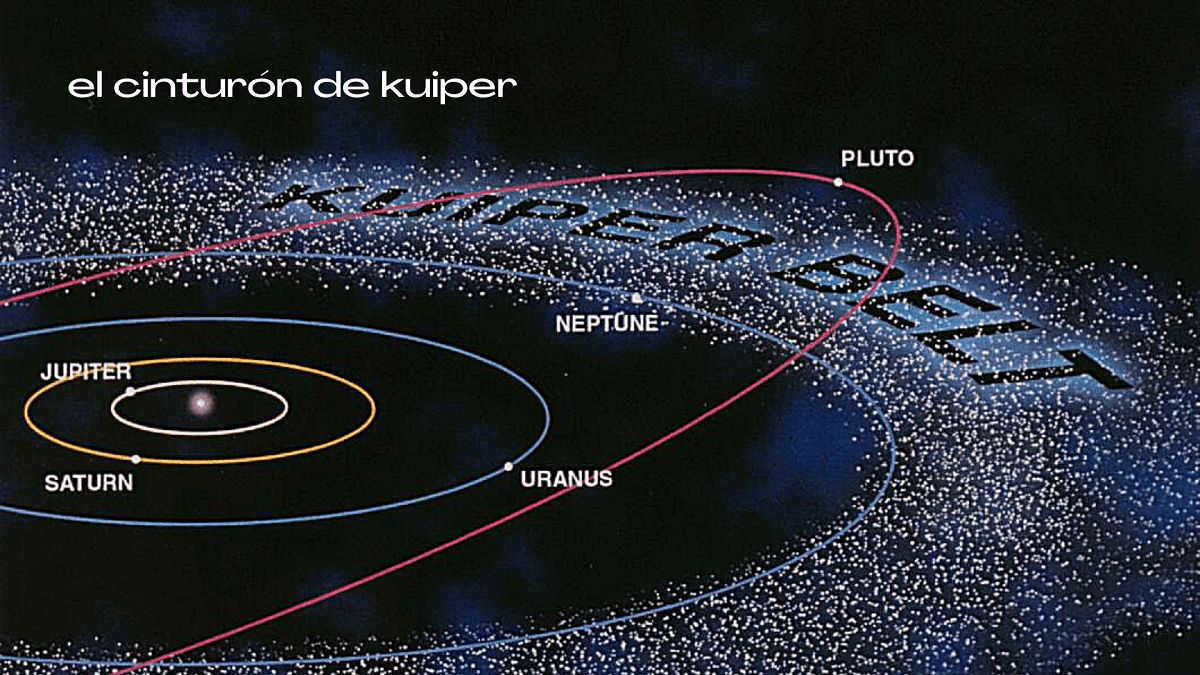
The number of celestial bodies in the Kuiper belt exceeds 2,000, and this is just a small portion of the total number found in this region of the solar system.
The Kuiper Belt consists of comets and asteroids, which have different compositions. Comets are comprised of dust, rocks, and ice (frozen gas), while asteroids are primarily composed of rocks and metals. These celestial bodies are remnants from the formation of the solar system.
Currently, the combined weight of the celestial objects comprising the Kuiper belt amounts to a mere 10% of Earth’s overall mass. Nevertheless, it is postulated that the original substance composing the Kuiper belt was approximately 7 to 10 times more massive than Earth. Moreover, it is speculated that these objects were formed through the amalgamation of four colossal planets, namely Jupiter, Saturn, Uranus, and Neptune.
Reasons for the Reduction in Mass Loss
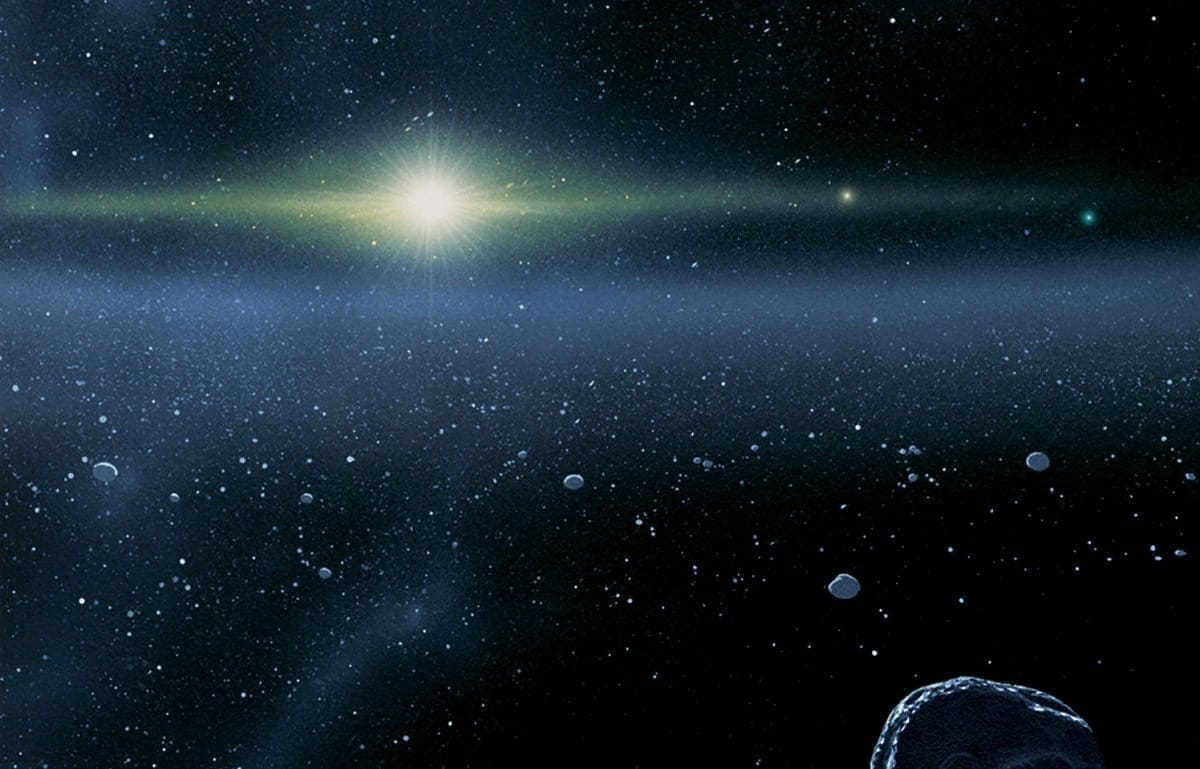
The objects present in the Kuiper belt are known as KBOs. The Kuiper belt experiences mass loss as a result of erosion and disruption. The collisions between the small comets and asteroids within the belt cause them to fragment into smaller KBOs and dust particles, which are then either blown away by solar wind or enter the solar system.
Due to the gradual erosion of the Kuiper belt, it is considered as one of the sources of comets within the solar system. The Oort cloud is another region from which comets originate.
Where is the Kuiper belt located?
As mentioned before, the Kuiper belt is situated in the outer reaches of our solar system, specifically in the orbit of Pluto. It is an expansive area, encompassing one of the largest regions within our solar system. The nearest boundary of the Kuiper belt lies within the orbit of Neptune, approximately 30 astronomical units (AU). (An astronomical unit is a unit of measurement equal to about 150 million kilometers, roughly the average distance between the Earth and the Sun.) The Kuiper belt itself is situated approximately 50 AU away from the Sun.
Additionally, it partially overlaps with the Kuiper Belt and extends into a region known as the Scattering Disk, which stretches out to 1000 AU from the Sun. However, it is important not to confuse the Kuiper belt with the Oort cloud. The Oort cloud is located in the farthest reaches of our solar system, in the outermost region, at a distance ranging from 2000 to 5000 AU from the Sun.





